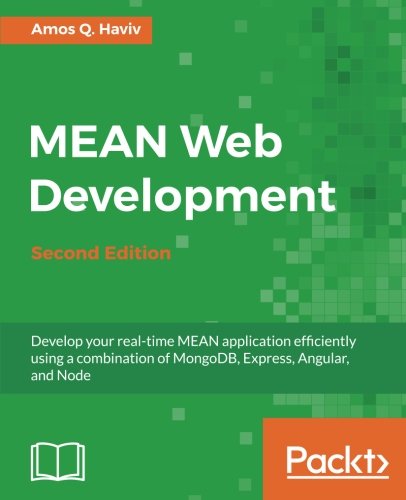

Most ebook files are in PDF format, so you can easily read them using various software such as Foxit Reader or directly on the Google Chrome browser.
Some ebook files are released by publishers in other formats such as .awz, .mobi, .epub, .fb2, etc. You may need to install specific software to read these formats on mobile/PC, such as Calibre.
Please read the tutorial at this link: https://ebookbell.com/faq
We offer FREE conversion to the popular formats you request; however, this may take some time. Therefore, right after payment, please email us, and we will try to provide the service as quickly as possible.
For some exceptional file formats or broken links (if any), please refrain from opening any disputes. Instead, email us first, and we will try to assist within a maximum of 6 hours.
EbookBell Team

0.0
0 reviewsThe MEAN stack is a collection of the most popular modern tools for web development that helps you build fast, robust, and maintainable web applications.
Starting with the MEAN core frameworks, this pragmatic guide will explain the key concepts of each framework, how to set them up properly, and how to use popular modules to connect it all together. By following the real-world examples shown in this tutorial, you will scaffold your MEAN application architecture, add an authentication layer, and develop an MVC structure to support your project development. You will learn the best practices of maintaining clear and simple code and will see how to avoid common pitfalls. Finally, you will walk through the different tools and frameworks that will help expedite your daily development cycles.
Watch how your application development grows by learning from the only guide that is solely orientated towards building a full, end-to-end, real-time application using the MEAN stack!
What you will learnAmos Q. Haviv is a software developer, technical consultant, and the creator of MEAN.IO and MEAN.JS. He has been a full-stack developer for almost a decade and worked for multiple start-ups and enterprise companies. For the past 6 years, Amos has been working with full-stack JavaScript solutions, including Node.js and MongoDB, as well as frontend frameworks such as Angular and React. In 2013, he created the first popular boilerplate for MEAN applications, MEAN.IO, and currently continues the development of MEAN solutions at http://meanjs.org. He also gives lectures on advanced web technologies at meetups and conferences, and he guides development teams at various companies.
Table of Contents